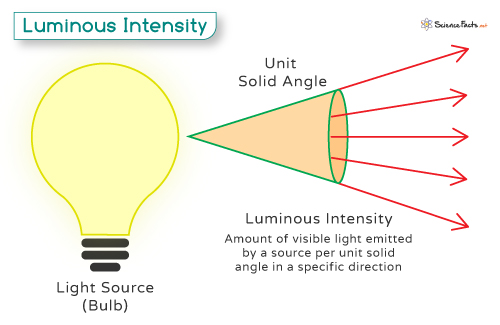In simpler terms, luminous intensity measures how bright a light appears to the human eye in a particular direction. This quantity is essential for technical and scientific purposes. It significantly impacts our daily lives, influencing how we perceive and interact with our environment.
Formula
Unit
Relationship with Other Photometric Quantities
Devices Used for Measuring Luminous Intensity
Applications
Iv = Ie x Km The luminous efficacy adjusts the radiant intensity to reflect how the human eye perceives light, giving us a measure of brightness aligned with human perception. This unit provides a standardized measure for comparing the perceived brightness of different light sources, ensuring consistency in quantifying luminous intensity across various applications and industries. Through precise calibration and measurement techniques, candela offers a reliable metric for evaluating and designing lighting systems. Luminous Flux (Lumens): Luminous flux measures the total amount of visible light emitted by a source, irrespective of direction. It represents the overall brightness of a source. It is related to luminous intensity but considers the emission in all directions. Illuminance (Lux): Illuminance measures the amount of light that falls on a surface area. It depends on luminous intensity and distance from the source, defining how bright an area appears rather than how much light a source emits.
